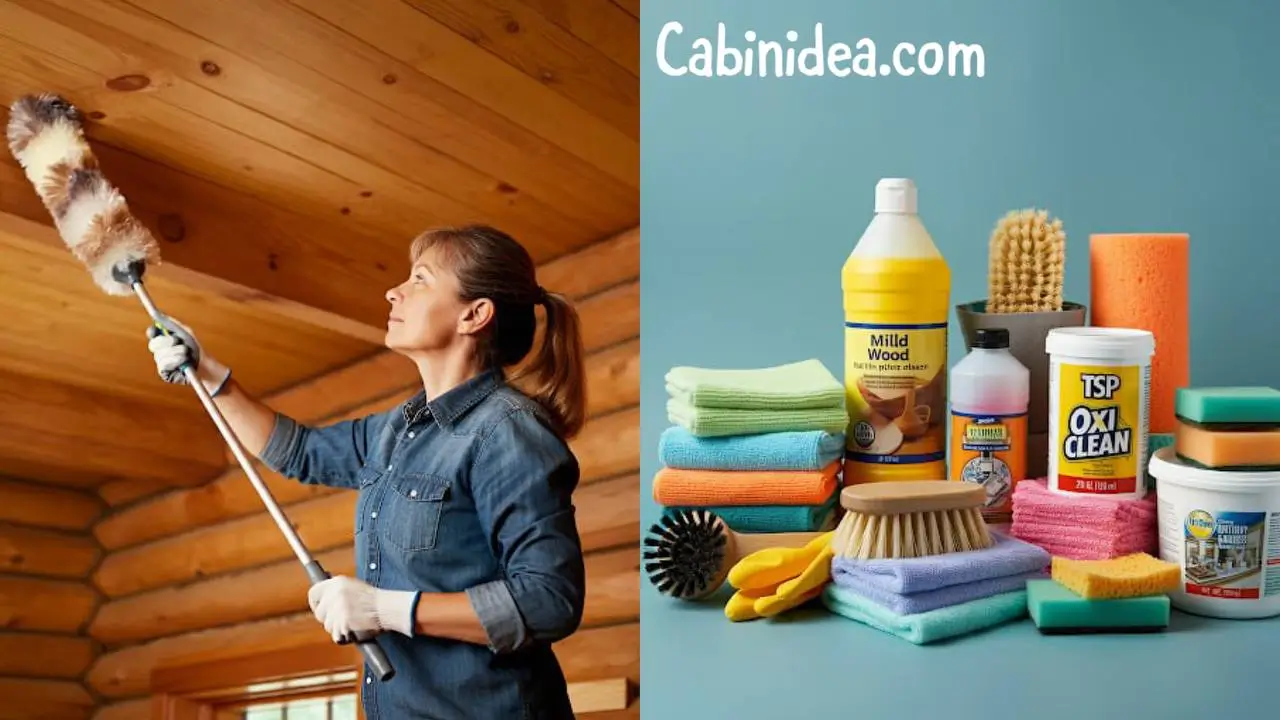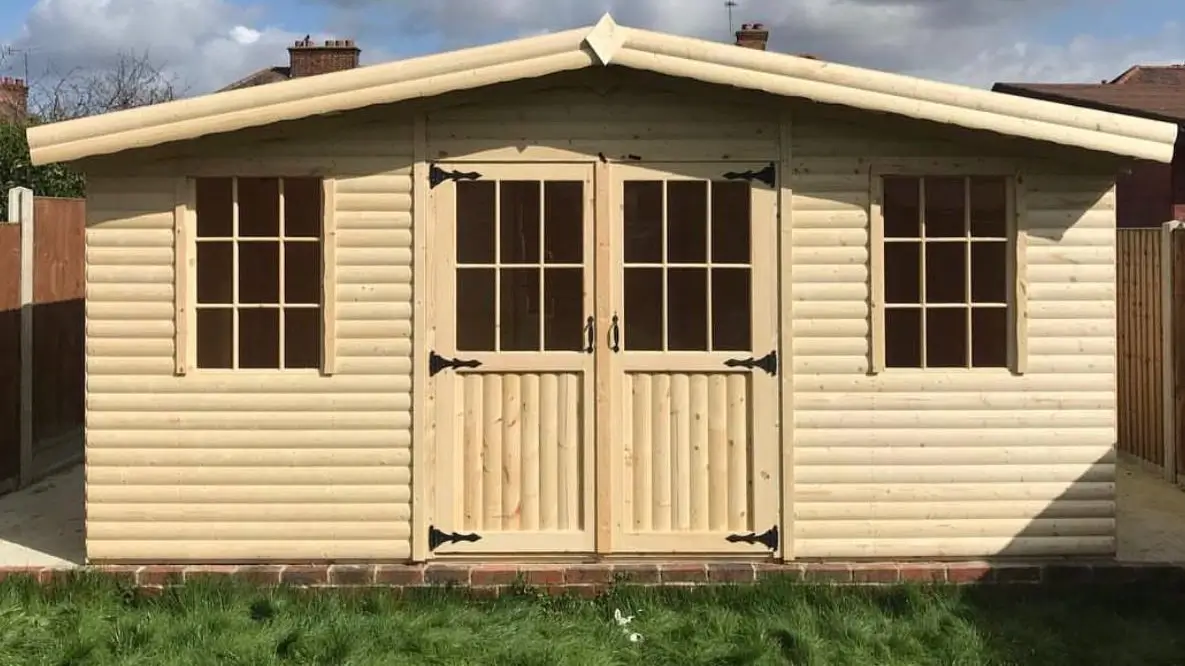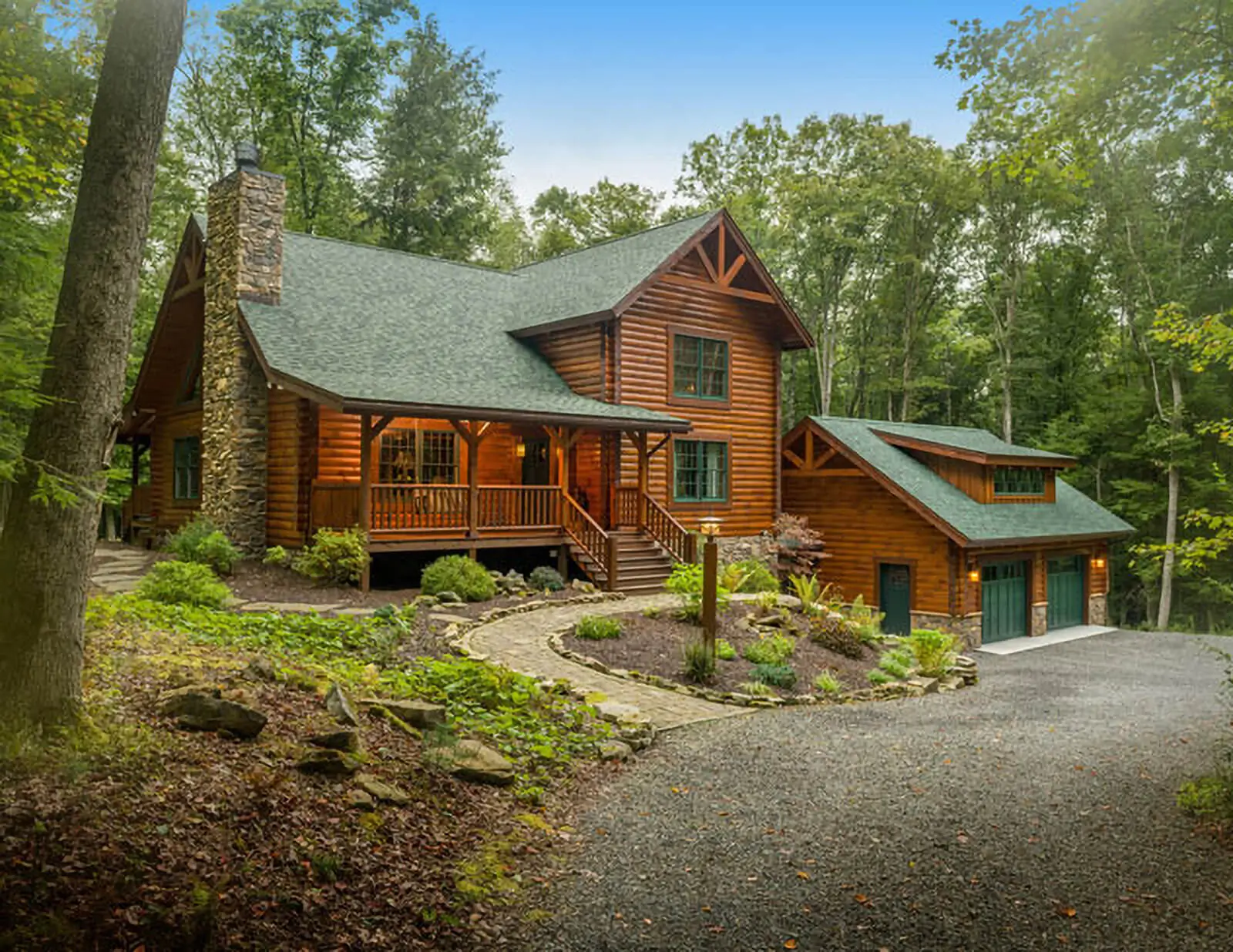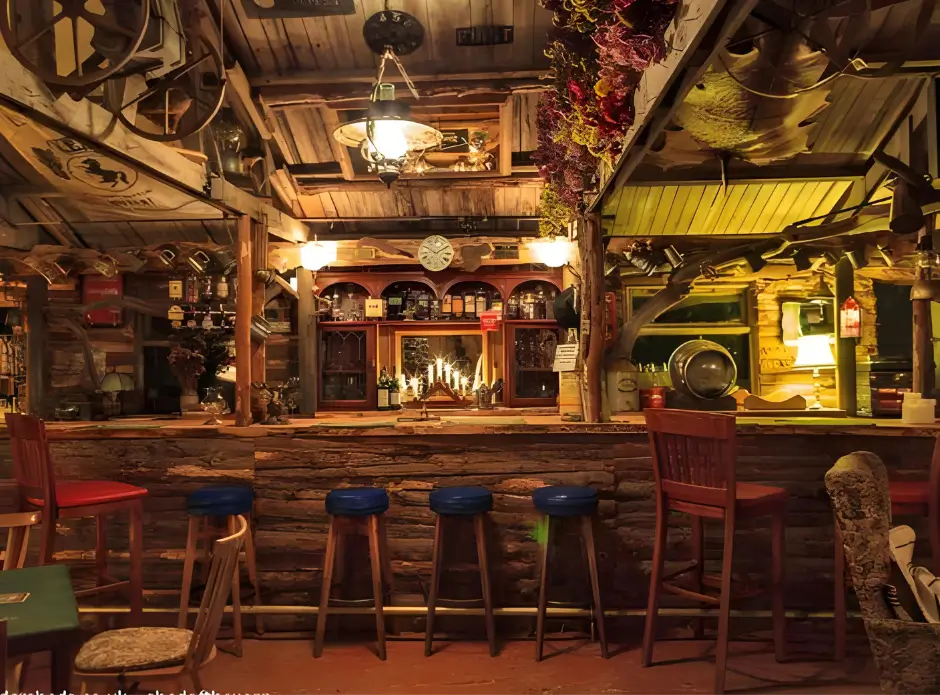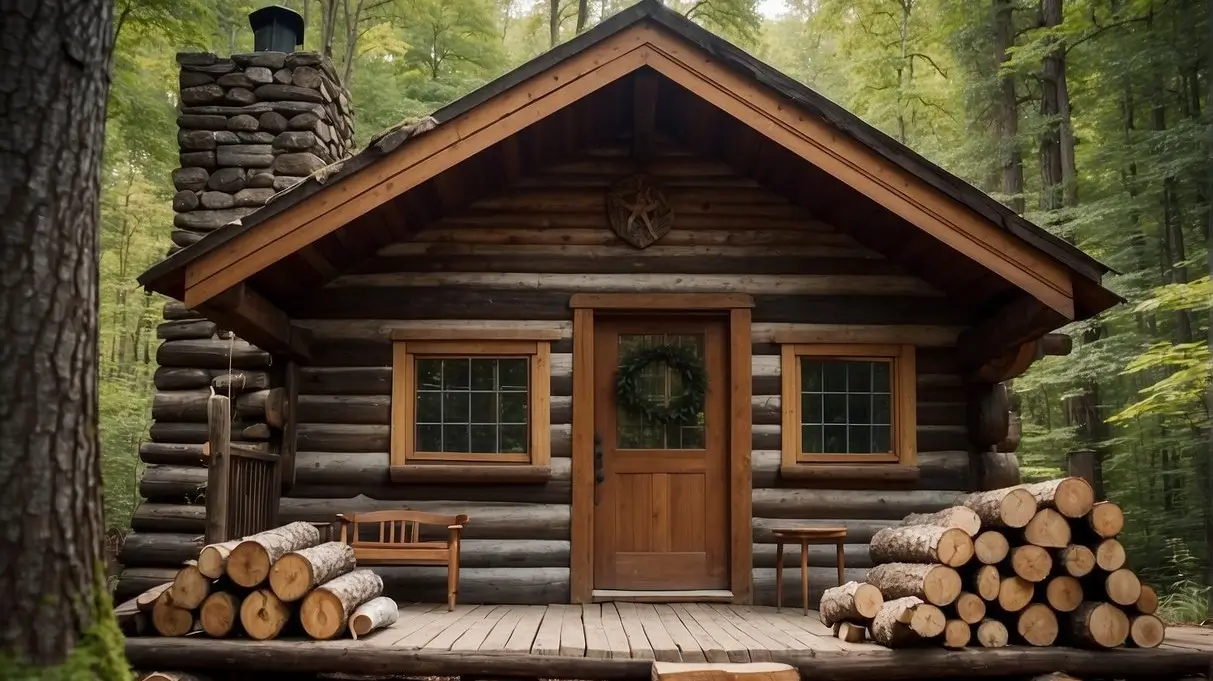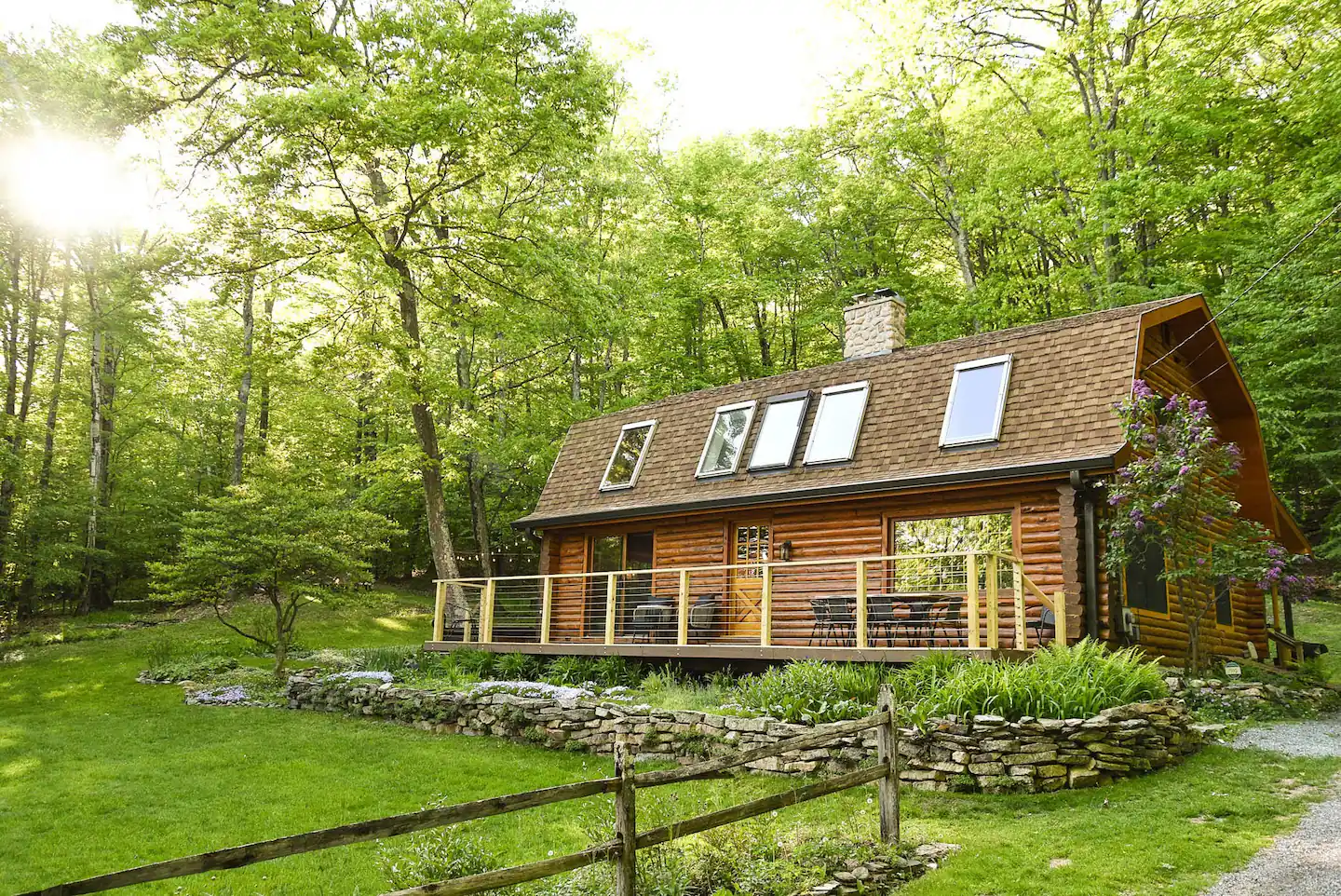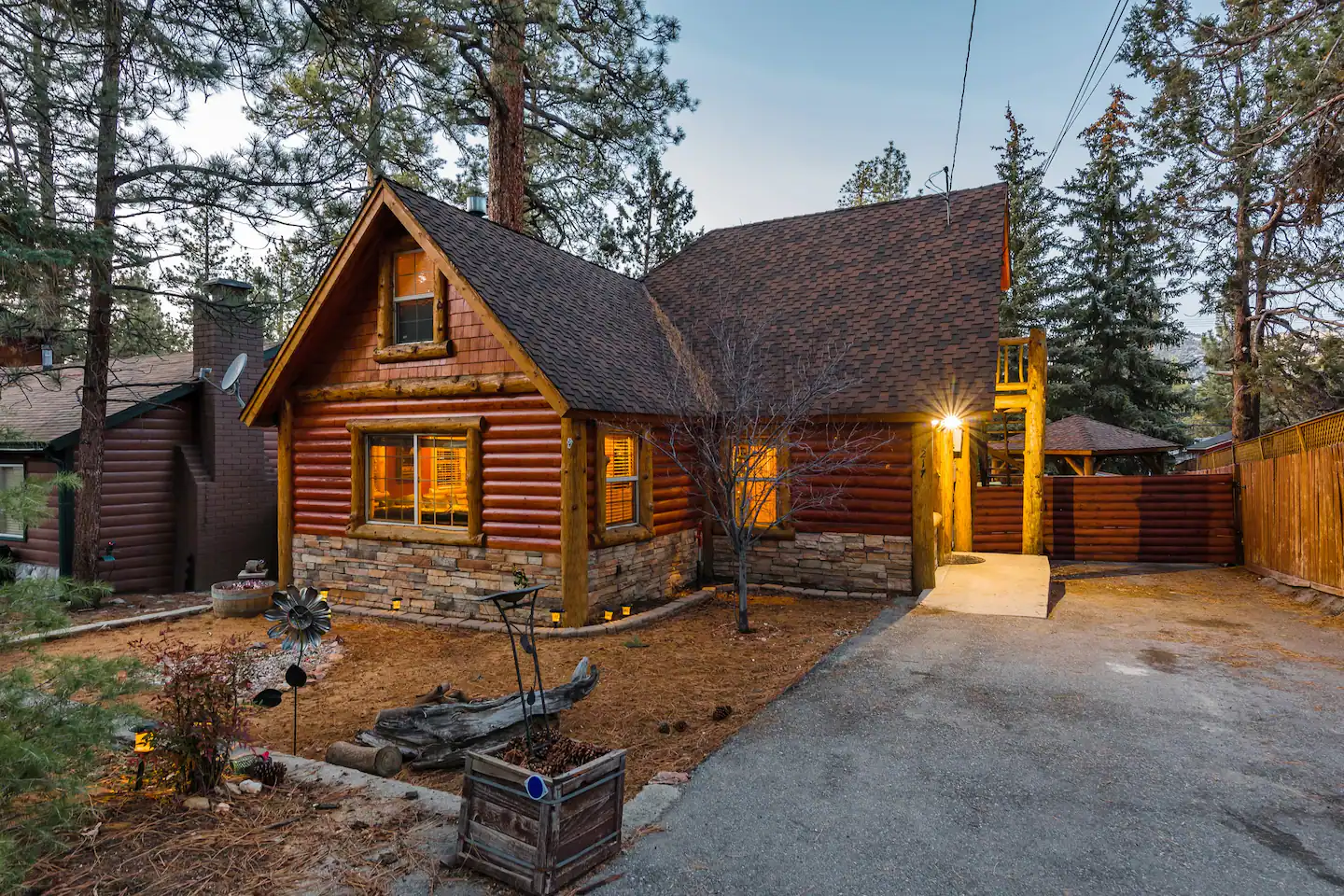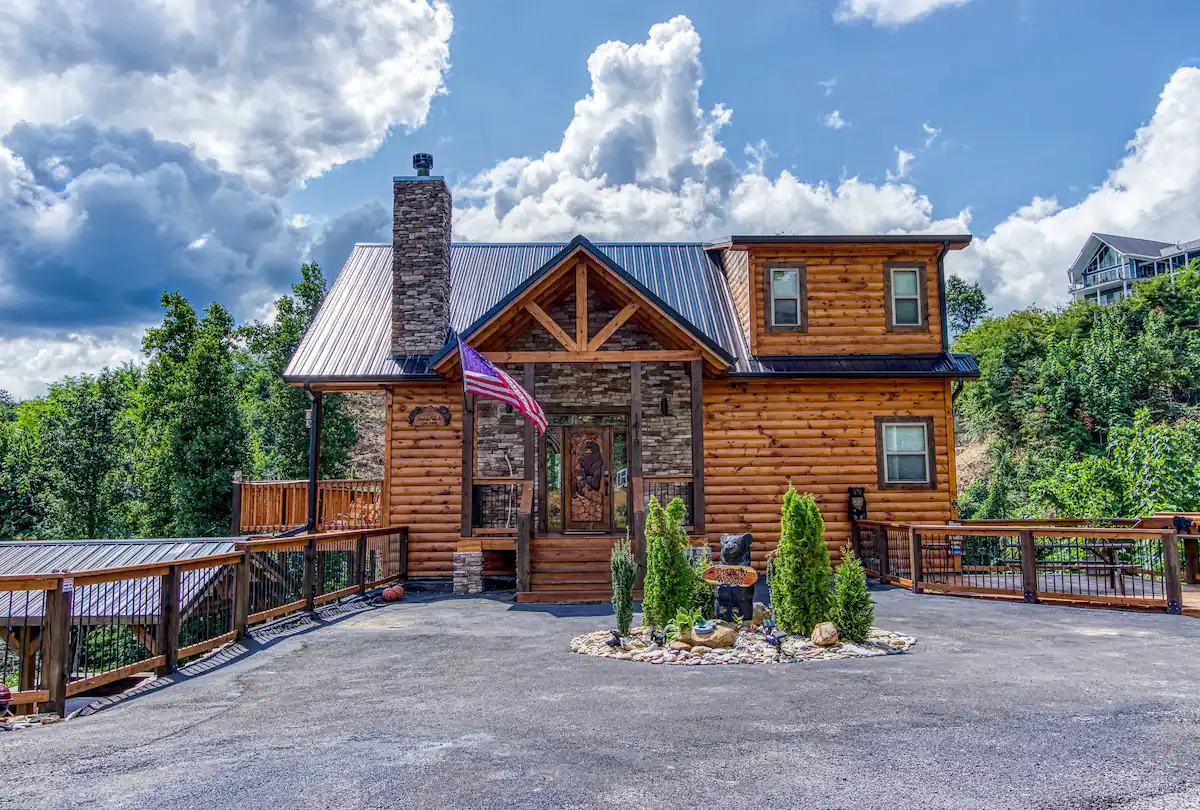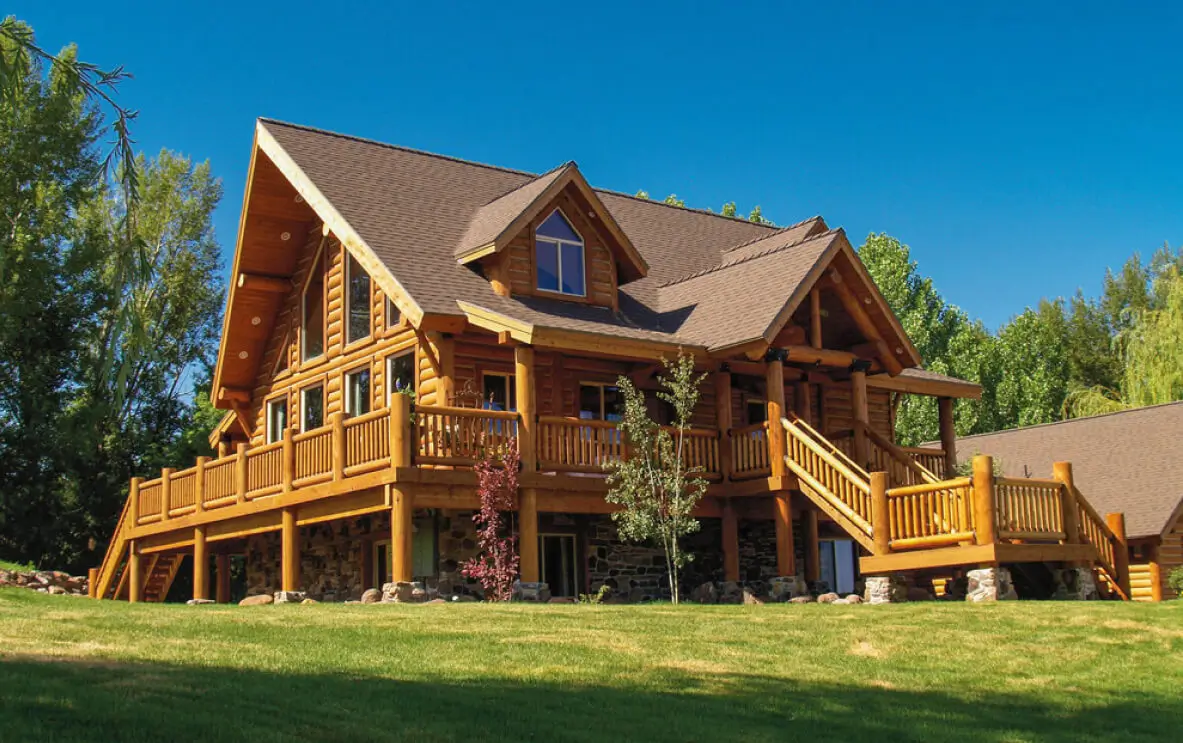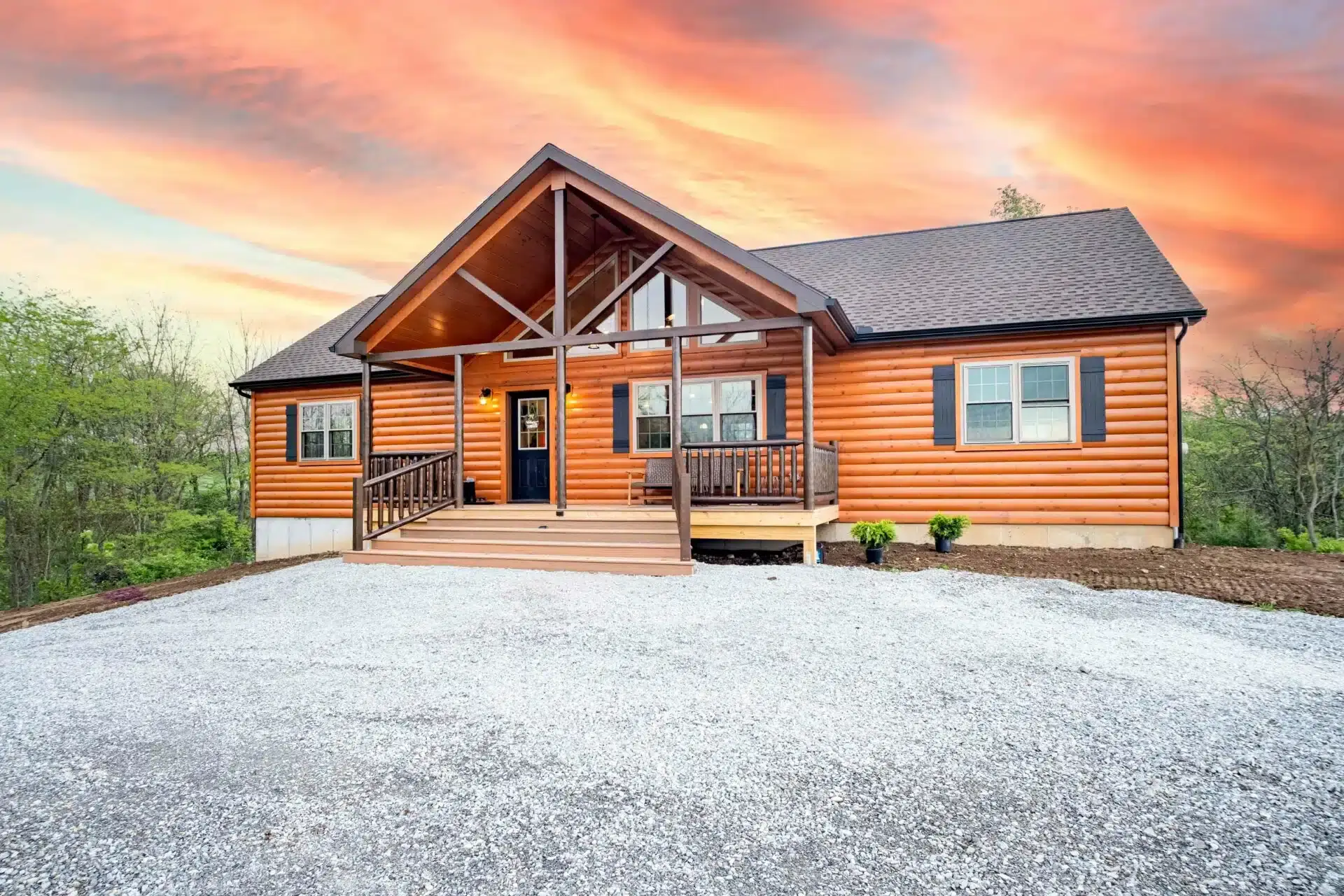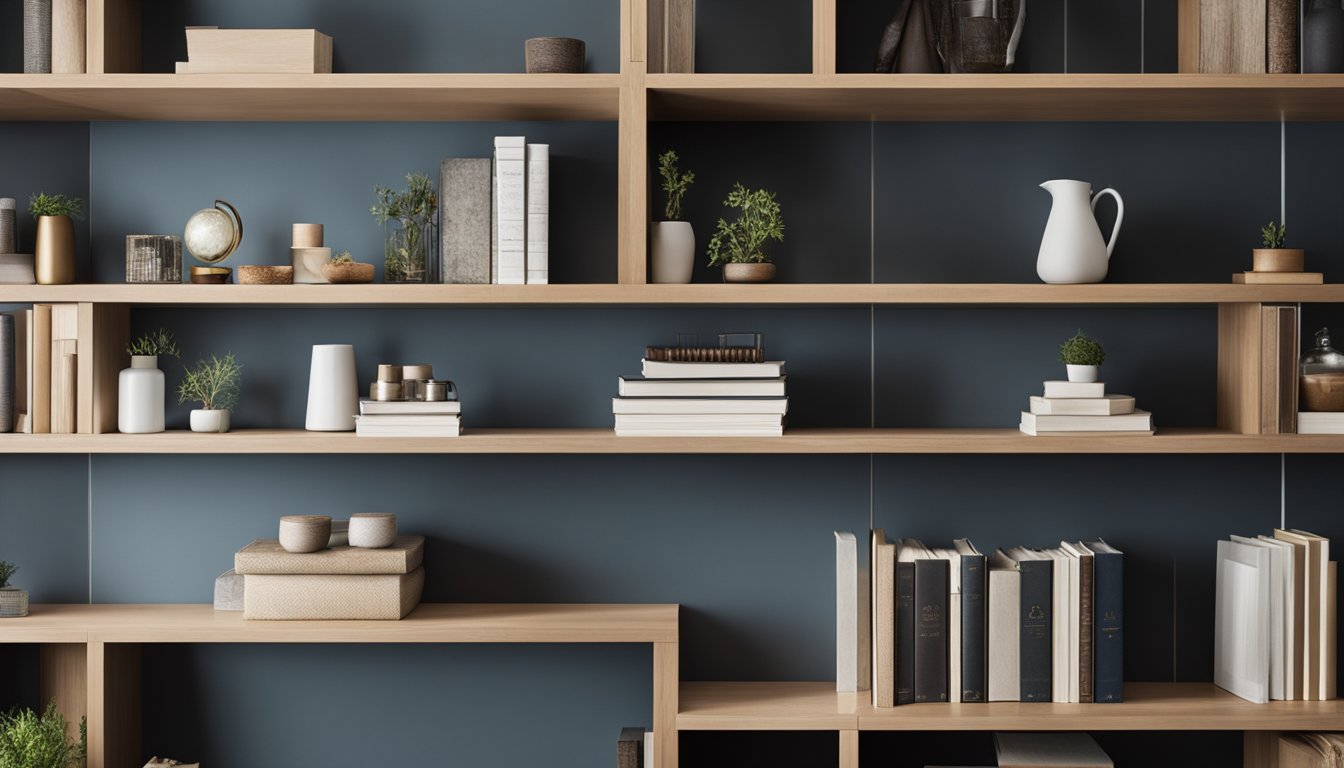How to Clean Log Cabin Interior Walls: Effective Techniques and Tips
Maintaining the beauty of log cabin interior walls requires regular care and the right cleaning techniques. Understanding the different types of logs used in cabin construction can significantly influence your approach to cleaning and maintenance. To keep log cabin walls clean and charming, use mild wood cleaner mixed with warm water, wiping from top to bottom with a damp cloth. This straightforward method ensures grime is removed without damaging the wood.
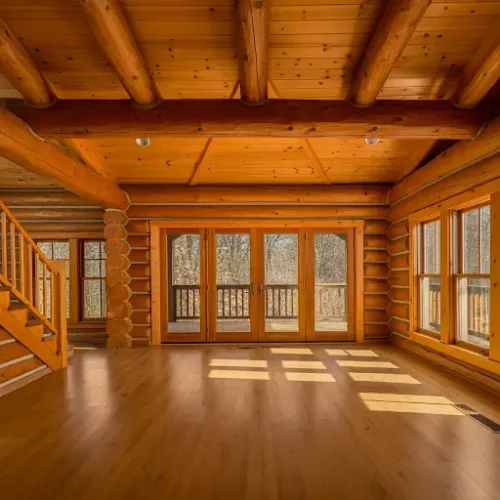
Proper ventilation is key during the cleaning process. Different products like citrus cleaners or Simple Green can be effective, but it’s crucial to test a small area first to avoid reactions. In some cases, a high-quality clear coat can protect the logs and maintain their natural appearance.
Caring for log cabin walls helps maintain the cabin’s rustic appeal while preventing dust, mold, and insect damage. By following expert advice, anyone can keep their cabin looking beautiful and inviting. For stubborn stains or extensive issues, professional help may be needed to restore the walls to their original glory.
Preparing for a Sparkling Clean
Before you begin, take these essential steps:
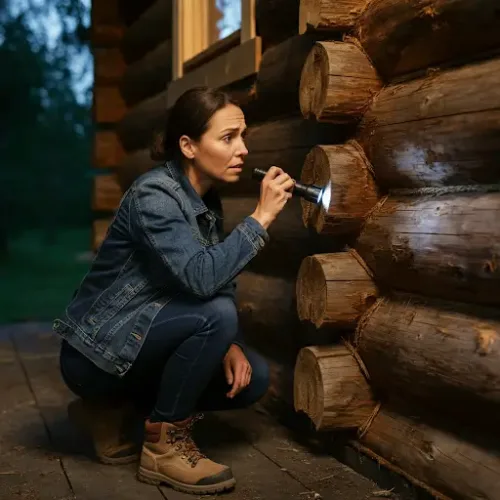
1. Assess the Area:
- Identify Trouble Spots: Carefully examine your walls for stains, damage, mold, or excessive moisture. Note any areas that need special attention.
- Remove Loose Debris: Use a dry cloth, soft brush, or vacuum with a brush attachment to clear away dust, cobwebs, and loose debris. This preps the surface for deeper cleaning.
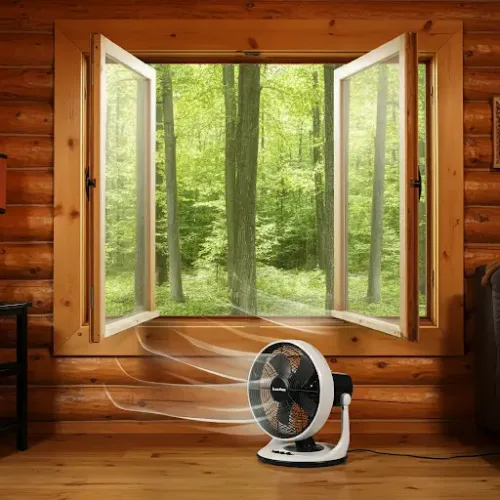
2. Ensure Proper Ventilation:
- Fresh Air is Key: Good ventilation is crucial when using cleaning solutions. It prevents moisture buildup (which can lead to mold) and disperses any fumes from cleaning products. Open windows and doors wide.
- Boost Airflow: In areas with limited natural ventilation, use portable fans or an exhaust system to improve airflow, especially when using stronger cleaning solutions.
Choosing the Right Cleaning Supplies
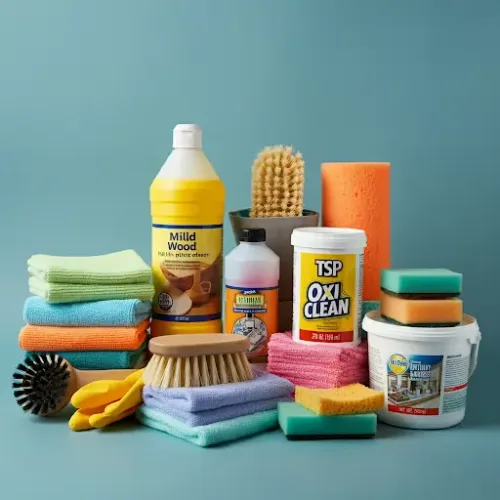
Selecting the right cleaning supplies is key to effectively cleaning your log cabin walls without causing damage. Here’s what you’ll need:
- Gentle Wood Cleaners: Opt for a mild, pH-neutral wood cleaner like Murphy’s Oil Soap. Avoid harsh chemicals that can strip the wood’s natural oils and cause discoloration. To ensure you’re using the most compatible cleaner, it’s helpful to know the species of wood used in your cabin.
- Specialized Solutions: For stubborn stains or mold, consider specialized cleaners containing TSP (trisodium phosphate) or OxiClean. Always follow product instructions carefully and test any new cleaner in an inconspicuous area first.
- Soft-Bristled Brushes and Microfiber Cloths: These tools are gentle on wood yet effective for cleaning and dusting. Microfiber cloths excel at trapping dust and dirt, while soft-bristled brushes can gently lift grime from crevices.
Cleaning Techniques: A Step-by-Step Guide
Routine Cleaning:
- Mix Your Cleaner: Dilute your chosen wood cleaner with warm water according to the product instructions.
- Dampen a Cloth: Use a soft cloth or sponge, slightly dampened with the cleaning solution. Avoid soaking the wood.
- Wipe from Top to Bottom: This prevents streaks and ensures even cleaning. Work in manageable sections, overlapping each stroke slightly.
- Regular Dusting: Dust your walls weekly with a microfiber cloth or a soft-bristled brush to prevent dirt buildup.
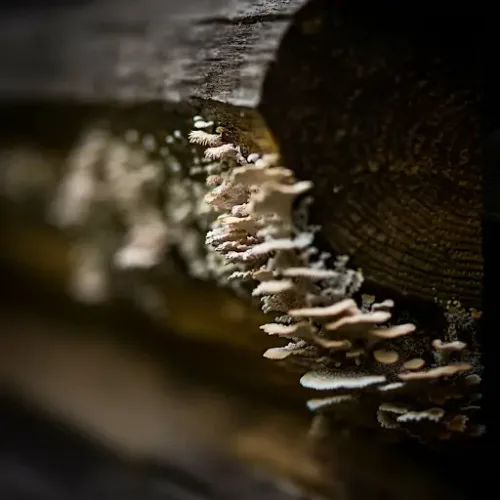
Dealing with Mold:
- Improve Ventilation: Increase airflow in affected areas to help dry out moisture. Dehumidifiers can also be helpful. To prevent mold growth, ensure adequate ventilation and address any moisture problems promptly.
- Vinegar Solution: For small mold spots, mix equal parts white vinegar and water in a spray bottle. Spray the mold, let it sit for a few minutes, then scrub with a soft brush and wipe clean.
- Seek Professional Help: For larger mold infestations, consult a professional for safe and effective removal. The EPA provides detailed information on mold remediation in homes. (https://www.epa.gov/mold/what-are-basic-mold-cleanup-steps)
Maintaining Those Gleaming Log Walls
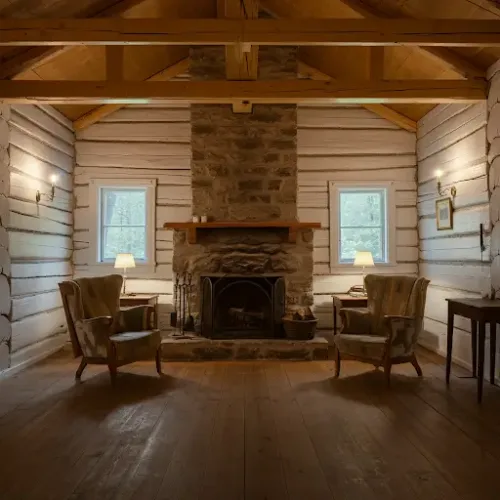
- Regular Dusting and Spot Cleaning: Consistent dusting and prompt attention to spills or stains will keep your walls looking their best.
- Preventative Measures:
- Ventilation: Ensure proper airflow to minimize moisture buildup. Consider installing exhaust fans in kitchens and bathrooms.
- Furniture Placement: Avoid placing furniture directly against walls, as this can trap dust and moisture.
- Protective Finishes: Consider applying a high-quality clear coat to your walls to repel dirt and resist moisture.
Understanding Wood Finishes
Identifying the type of finish on your walls will help you choose the right cleaning solutions.
- Varnish: Durable, glossy or satin sheen, good protection.
- Lacquer: Fast-drying, excellent water and alcohol resistance.
- Oil: Natural, enhances beauty, warm look.
Identifying Your Finish:
Place a few drops of water on an inconspicuous area. If it beads up, it’s likely varnish or lacquer. If it absorbs, it’s probably an oil finish.
Cleaning Tips:
- Varnish/Lacquer: Use a mild wood cleaner diluted with water. Avoid abrasive cleaners.
- Oil: Use a gentle soap designed for oil-finished wood. Apply a thin coat of oil after cleaning.
Tackling Tough Stains
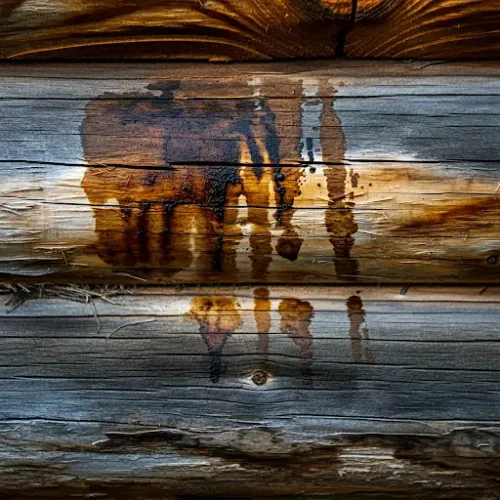
- Water Stains: Mix equal parts white vinegar and water, apply with a soft cloth, and rub gently.
- Smoke Stains: For light stains, use mild dish soap and warm water. For heavier stains, use a specialized smoke remover.
- Grease Stains: Sprinkle baking soda to absorb the oil, then scrub with a damp cloth.
Cleaning Log Cabin Ceilings
- Use a long-handled duster or vacuum to reach high spots.
- Adapt wall cleaning techniques, being mindful of drips.
- Consider a stepladder or scaffolding for very high ceilings.
Maintaining Log Cabin Chinking
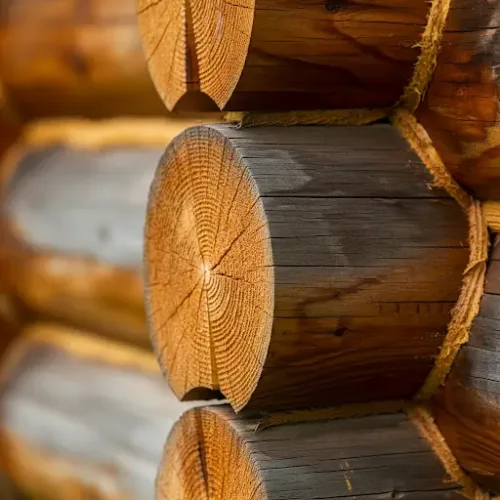
Chinking seals the gaps between logs, preventing drafts and keeping out moisture and pests. For more detailed information about chinking maintenance and repair, visit the Log Home Builders Association website. (https://www.lhba.com/)
- Inspect regularly for cracks, gaps, or deterioration.
- Clean with a soft brush or vacuum attachment. Avoid harsh chemicals or power washers.
- Repair or replace damaged chinking promptly.
FAQs: Keeping Your Log Cabin Walls Sparkling Clean
General Cleaning & Maintenance
- What’s the best way to clean interior log cabin walls?
- Start with a mild, pH-neutral wood cleaner and warm water.
- Apply the solution with a soft cloth or sponge, wiping from top to bottom.
- For stubborn grime, gently scrub with a soft-bristled brush.
- Always test any cleaning solution in an inconspicuous area first.
- How often should I clean my log cabin walls?
- Dust weekly to prevent dirt buildup.
- A more thorough cleaning with a wood cleaner can be done monthly or quarterly, depending on your cabin’s location and usage.
- Can I use a pressure washer to clean my log walls?
- No, pressure washers can damage the wood and force water into crevices, leading to moisture problems.
- What’s the best way to prevent dust buildup?
- Regular dusting with a microfiber cloth or vacuum with a soft brush attachment.
- Use doormats to capture dirt at entryways.
- Minimize outdoor-to-indoor transitions.
- Consider using air filters.
- How can I protect my log cabin walls from sun damage?
- Use curtains or blinds to block direct sunlight, especially during peak hours.
- Consider UV-protective films for your windows.
- Are there any natural cleaning solutions I can use?
- Diluted white vinegar is effective for general cleaning and mold removal.
- Lemon juice and water can clean and deodorize.
- A paste of baking soda and water can tackle stubborn stains.
Dealing with Specific Issues
- How can I tell if I have a mold problem?
- Look for:
- Discolored patches (black, green, gray, or white)
- Musty odor
- Signs of water damage
- Look for:
- What should I do about insect damage in my log walls?
- Identify the insect to determine the best course of action. The National Pest Management Association offers resources on identifying and controlling common household pests. (https://www.npmapestworld.org/)
- Consider using insecticides or consulting a pest control professional.
- Can I paint my log cabin walls?
- Yes, but choose a breathable paint specifically designed for wood.
- Proper preparation and priming are essential.
- How do I remove sap from log cabin walls?
- Carefully scrape off hardened sap with a plastic scraper.
- Rub sticky sap with an ice cube to harden it before scraping.
Wood Finishes & Treatments
- How often should I reapply the finish on my log walls?
- It depends on the type of finish and wear and tear.
- Generally, reapplication is needed every 3-5 years.
- What’s the difference between varnish and lacquer?
- Varnish is more durable and offers better protection.
- Lacquer dries faster and is more water-resistant.
- Can I change the color of my log cabin walls without stripping the existing finish?
- Yes, stains and toners can change the color while preserving the wood grain.
- Consult a professional for advice on the best approach.
Conclusion
A clean and well-maintained log cabin is a welcoming retreat. By investing a little time and effort in cleaning your walls, you can enjoy a healthy and inviting living space that showcases the natural beauty of wood. Have any questions or cleaning challenges we didn’t cover? Leave a comment and we’ll do our best to help!
Follow Us on Google News!
Maintaining the beauty of log cabin interior walls requires regular care and the right cleaning techniques. Understanding the different types of logs used in cabin construction can significantly influence your approach to cleaning and maintenance. To keep log cabin walls clean and charming, use mild wood cleaner mixed with warm water, wiping from top to bottom with a damp cloth. This straightforward method ensures grime is removed without damaging the wood.

Proper ventilation is key during the cleaning process. Different products like citrus cleaners or Simple Green can be effective, but it’s crucial to test a small area first to avoid reactions. In some cases, a high-quality clear coat can protect the logs and maintain their natural appearance.
Caring for log cabin walls helps maintain the cabin’s rustic appeal while preventing dust, mold, and insect damage. By following expert advice, anyone can keep their cabin looking beautiful and inviting. For stubborn stains or extensive issues, professional help may be needed to restore the walls to their original glory.
Preparing for a Sparkling Clean
Before you begin, take these essential steps:

1. Assess the Area:
- Identify Trouble Spots: Carefully examine your walls for stains, damage, mold, or excessive moisture. Note any areas that need special attention.
- Remove Loose Debris: Use a dry cloth, soft brush, or vacuum with a brush attachment to clear away dust, cobwebs, and loose debris. This preps the surface for deeper cleaning.

2. Ensure Proper Ventilation:
- Fresh Air is Key: Good ventilation is crucial when using cleaning solutions. It prevents moisture buildup (which can lead to mold) and disperses any fumes from cleaning products. Open windows and doors wide.
- Boost Airflow: In areas with limited natural ventilation, use portable fans or an exhaust system to improve airflow, especially when using stronger cleaning solutions.
Choosing the Right Cleaning Supplies

Selecting the right cleaning supplies is key to effectively cleaning your log cabin walls without causing damage. Here’s what you’ll need:
- Gentle Wood Cleaners: Opt for a mild, pH-neutral wood cleaner like Murphy’s Oil Soap. Avoid harsh chemicals that can strip the wood’s natural oils and cause discoloration. To ensure you’re using the most compatible cleaner, it’s helpful to know the species of wood used in your cabin.
- Specialized Solutions: For stubborn stains or mold, consider specialized cleaners containing TSP (trisodium phosphate) or OxiClean. Always follow product instructions carefully and test any new cleaner in an inconspicuous area first.
- Soft-Bristled Brushes and Microfiber Cloths: These tools are gentle on wood yet effective for cleaning and dusting. Microfiber cloths excel at trapping dust and dirt, while soft-bristled brushes can gently lift grime from crevices.
Cleaning Techniques: A Step-by-Step Guide
Routine Cleaning:
- Mix Your Cleaner: Dilute your chosen wood cleaner with warm water according to the product instructions.
- Dampen a Cloth: Use a soft cloth or sponge, slightly dampened with the cleaning solution. Avoid soaking the wood.
- Wipe from Top to Bottom: This prevents streaks and ensures even cleaning. Work in manageable sections, overlapping each stroke slightly.
- Regular Dusting: Dust your walls weekly with a microfiber cloth or a soft-bristled brush to prevent dirt buildup.

Dealing with Mold:
- Improve Ventilation: Increase airflow in affected areas to help dry out moisture. Dehumidifiers can also be helpful. To prevent mold growth, ensure adequate ventilation and address any moisture problems promptly.
- Vinegar Solution: For small mold spots, mix equal parts white vinegar and water in a spray bottle. Spray the mold, let it sit for a few minutes, then scrub with a soft brush and wipe clean.
- Seek Professional Help: For larger mold infestations, consult a professional for safe and effective removal. The EPA provides detailed information on mold remediation in homes. (https://www.epa.gov/mold/what-are-basic-mold-cleanup-steps)
Maintaining Those Gleaming Log Walls

- Regular Dusting and Spot Cleaning: Consistent dusting and prompt attention to spills or stains will keep your walls looking their best.
- Preventative Measures:
- Ventilation: Ensure proper airflow to minimize moisture buildup. Consider installing exhaust fans in kitchens and bathrooms.
- Furniture Placement: Avoid placing furniture directly against walls, as this can trap dust and moisture.
- Protective Finishes: Consider applying a high-quality clear coat to your walls to repel dirt and resist moisture.
Understanding Wood Finishes
Identifying the type of finish on your walls will help you choose the right cleaning solutions.
- Varnish: Durable, glossy or satin sheen, good protection.
- Lacquer: Fast-drying, excellent water and alcohol resistance.
- Oil: Natural, enhances beauty, warm look.
Identifying Your Finish:
Place a few drops of water on an inconspicuous area. If it beads up, it’s likely varnish or lacquer. If it absorbs, it’s probably an oil finish.
Cleaning Tips:
- Varnish/Lacquer: Use a mild wood cleaner diluted with water. Avoid abrasive cleaners.
- Oil: Use a gentle soap designed for oil-finished wood. Apply a thin coat of oil after cleaning.
Tackling Tough Stains

- Water Stains: Mix equal parts white vinegar and water, apply with a soft cloth, and rub gently.
- Smoke Stains: For light stains, use mild dish soap and warm water. For heavier stains, use a specialized smoke remover.
- Grease Stains: Sprinkle baking soda to absorb the oil, then scrub with a damp cloth.
Cleaning Log Cabin Ceilings
- Use a long-handled duster or vacuum to reach high spots.
- Adapt wall cleaning techniques, being mindful of drips.
- Consider a stepladder or scaffolding for very high ceilings.
Maintaining Log Cabin Chinking

Chinking seals the gaps between logs, preventing drafts and keeping out moisture and pests. For more detailed information about chinking maintenance and repair, visit the Log Home Builders Association website. (https://www.lhba.com/)
- Inspect regularly for cracks, gaps, or deterioration.
- Clean with a soft brush or vacuum attachment. Avoid harsh chemicals or power washers.
- Repair or replace damaged chinking promptly.
FAQs: Keeping Your Log Cabin Walls Sparkling Clean
General Cleaning & Maintenance
- What’s the best way to clean interior log cabin walls?
- Start with a mild, pH-neutral wood cleaner and warm water.
- Apply the solution with a soft cloth or sponge, wiping from top to bottom.
- For stubborn grime, gently scrub with a soft-bristled brush.
- Always test any cleaning solution in an inconspicuous area first.
- How often should I clean my log cabin walls?
- Dust weekly to prevent dirt buildup.
- A more thorough cleaning with a wood cleaner can be done monthly or quarterly, depending on your cabin’s location and usage.
- Can I use a pressure washer to clean my log walls?
- No, pressure washers can damage the wood and force water into crevices, leading to moisture problems.
- What’s the best way to prevent dust buildup?
- Regular dusting with a microfiber cloth or vacuum with a soft brush attachment.
- Use doormats to capture dirt at entryways.
- Minimize outdoor-to-indoor transitions.
- Consider using air filters.
- How can I protect my log cabin walls from sun damage?
- Use curtains or blinds to block direct sunlight, especially during peak hours.
- Consider UV-protective films for your windows.
- Are there any natural cleaning solutions I can use?
- Diluted white vinegar is effective for general cleaning and mold removal.
- Lemon juice and water can clean and deodorize.
- A paste of baking soda and water can tackle stubborn stains.
Dealing with Specific Issues
- How can I tell if I have a mold problem?
- Look for:
- Discolored patches (black, green, gray, or white)
- Musty odor
- Signs of water damage
- Look for:
- What should I do about insect damage in my log walls?
- Identify the insect to determine the best course of action. The National Pest Management Association offers resources on identifying and controlling common household pests. (https://www.npmapestworld.org/)
- Consider using insecticides or consulting a pest control professional.
- Can I paint my log cabin walls?
- Yes, but choose a breathable paint specifically designed for wood.
- Proper preparation and priming are essential.
- How do I remove sap from log cabin walls?
- Carefully scrape off hardened sap with a plastic scraper.
- Rub sticky sap with an ice cube to harden it before scraping.
Wood Finishes & Treatments
- How often should I reapply the finish on my log walls?
- It depends on the type of finish and wear and tear.
- Generally, reapplication is needed every 3-5 years.
- What’s the difference between varnish and lacquer?
- Varnish is more durable and offers better protection.
- Lacquer dries faster and is more water-resistant.
- Can I change the color of my log cabin walls without stripping the existing finish?
- Yes, stains and toners can change the color while preserving the wood grain.
- Consult a professional for advice on the best approach.
Conclusion
A clean and well-maintained log cabin is a welcoming retreat. By investing a little time and effort in cleaning your walls, you can enjoy a healthy and inviting living space that showcases the natural beauty of wood. Have any questions or cleaning challenges we didn’t cover? Leave a comment and we’ll do our best to help!
Follow Us on Google News!
news via inbox
Nulla turp dis cursus. Integer liberos euismod pretium faucibua

